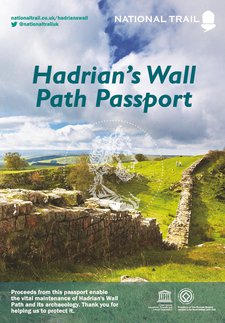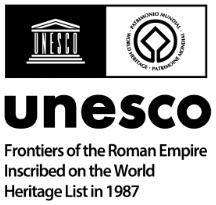Segedunum's Top 21 Objects
17 June 2021 marked 21 years since Segedunum Roman Fort & Museum opened to the public. It has become a key attraction on the UNESCO World Heritage Site of Hadrian’s Wall, and an important community and learning resource. More than 941,000 visitors have been welcomed through the doors since opening day on 17 June 2000.
The galleries and external displays tell the rich, dynamic story of Segedunum and its landscape, valued at different times for its strategic importance, the quality of the coal beneath the ground and its world-famous shipyard. Each object or feature provides a tangible connection into this history, engaging us in a different way, with its own relevance and resonance. Some connect with us and our individual natures and interests with particular strength. We all have our own favourites. As part of our 21st birthday celebrations, we asked our staff team to compile their top 21. Do you agree with their choices? What would you choose? Let us know on Twitter and Facebook using the hashtag #SegedunumXXI.
1. Cat paw impression

I just love how this simple piece of pottery shows tangible evidence of a living creature having left its mark which still exists almost 2000 years later.
Virginia, Learning Officer
2. Amphora with VIRGIN stamp

This type of amphora was used to transport olive oil from Spain, and often had a stamp on the handle relating to the name of the owner of the estate where the oil was made. This is a stamp of the Virginensia workshop, but it amuses me that virgin olive oil has a different meaning for us.
Alex, Keeper of Archaeology
3. Colour-coated beaker with ducks

There are very few other beakers in the country decorated with ducks. I’ve often wondered what made the potter decide ‘today I’m bored with dogs and deer. I know, let’s try ducks and see if that’s a seller’.
Alex, Keeper of Archaeology
4. Footprint on tile
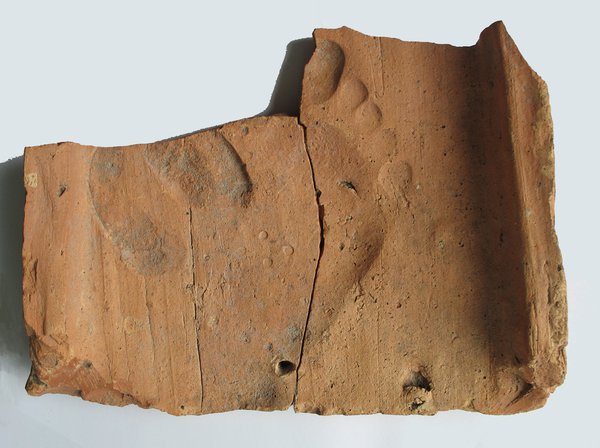
This just brings you very close to the person who made it, as it would look no different if it was made today. The person was perhaps one of the tile-makers - although I would ask him why the soldiers at Wallsend were so bad at making tiles!
Alex, Keeper of Archaeology
5. Throwing stones

A simple and unexpected weapon that the Romans used - rather different from the gladius, spatha and pilum.
Geoff, Museum Manager
6. Coin collection
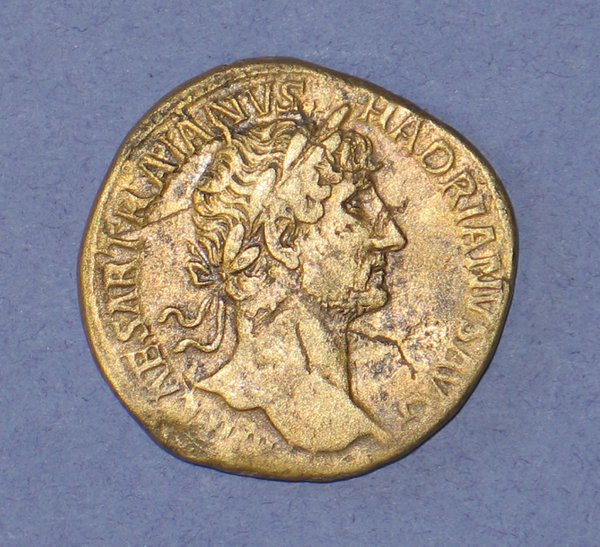
I find coins fascinating: the portrayal of real people, the propaganda, the dates setting the objects in time, and the ingenuity of using money to control.
Virginia, Learning Officer
7. Child's teeth
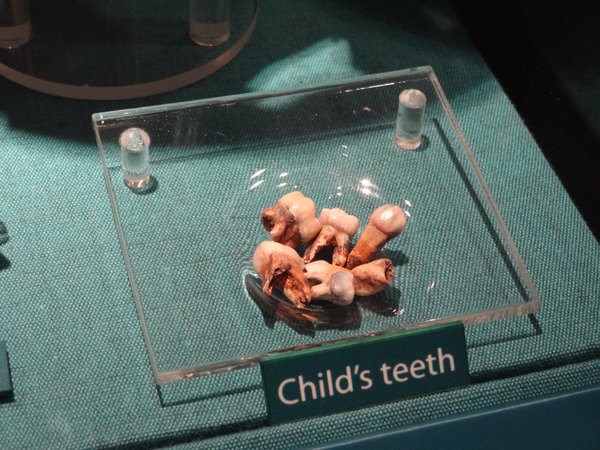
They come from a child’s skull, aged about four years old and probably locally born. The skull had been buried under a wall of a building in the civilian settlement sometime in the first half of the third century. Due to the soil conditions the bone of the skull did not survive, but the teeth did.
Daniel, Customer Services Assistant
8. Replica silver horde
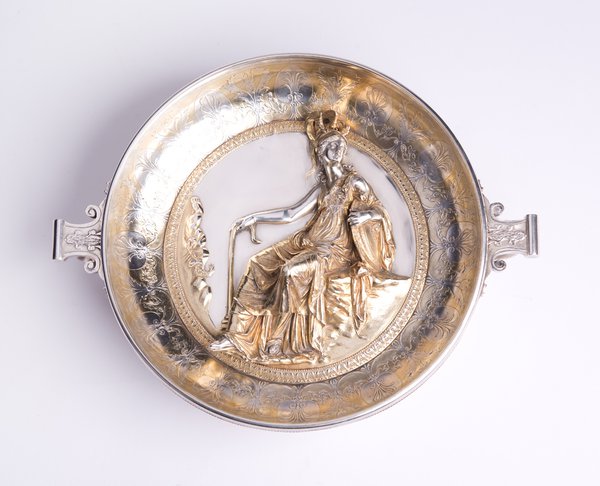
I chose this, not only for its craftsmanship and beauty, but also because I have had the privilege of actually using the objects at an
event organised by our Archaeology Department.
Liz, Administrator
9. Roman die
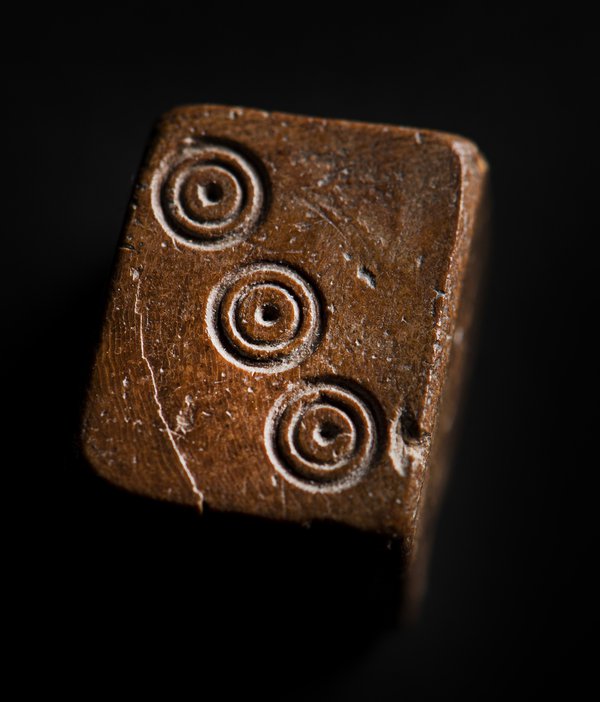
Dice games were common in the Roman period and dice are often found on Roman sites, but they always fascinate me. I’m a big fan of playing games with dice and looking at this, I can just imagine sitting down for a game with someone who lived 1900 years ago!
Geoff, Museum Manager
10. Fort model in the Roman Gallery
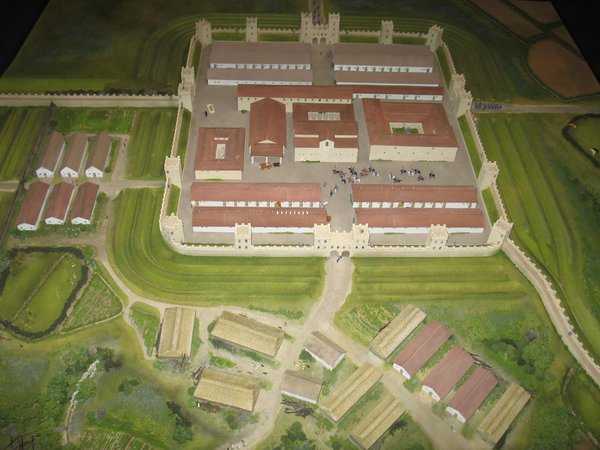
The detail is incredible and the more you look, the more you see detail that you had previously missed. It’s also very useful for winding-up a guided tour.
Stuart, retired Customer Services Assistant
11. Oil lamp with hole but in top
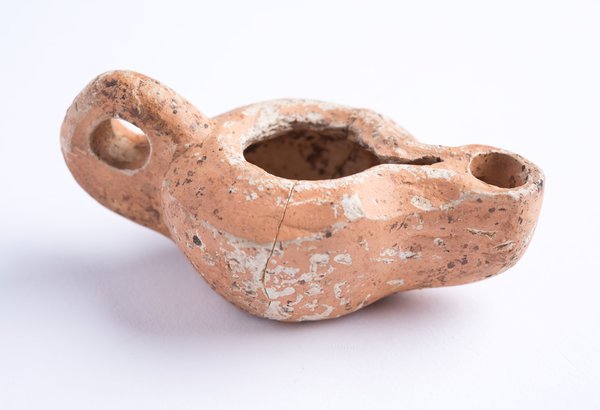
We have two oil lamps that are very similar to one another. One has a large hole cut out of the top to make it easier to fill with oil. As a reenactor who has tried to fill oil lamps using only the small hole said to be for pouring the oil in, I can understand the person’s frustration at such a stupid little hole. I usually just fill the lamp using the wick hole instead.
Alex, Keeper of Archaeology
12. Lead shrine
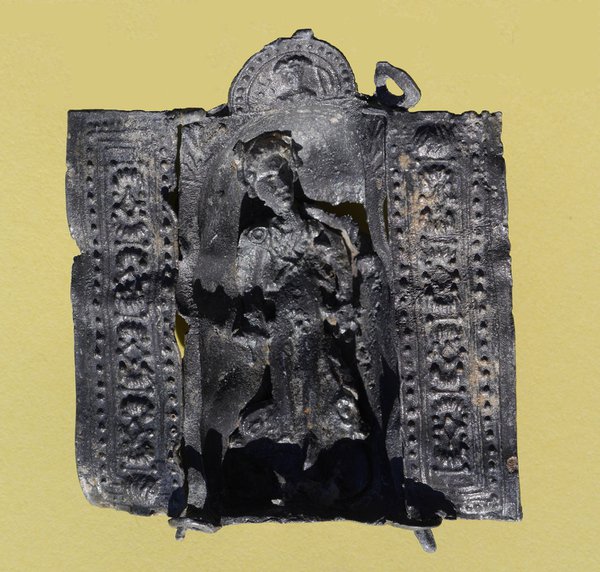
I love the genius of the design of this. You buy your little shrine and then look at the flat figures of various deities laid out in front of you and then pick the one you want. The little tab at the bottom of the figure gets fed through the slot in the base of the shrine and folded over and your shrine is complete. The craftsman does not need to make a different shrine for each deity, which would take up lots of space and with no guarantee they will sell. He just has to make sure he has a wide range of gods to suit everyone, which, being flat, are easy to pack away and carry round with him.
Alex, Keeper of Archaeology
13. Roman toilet seat
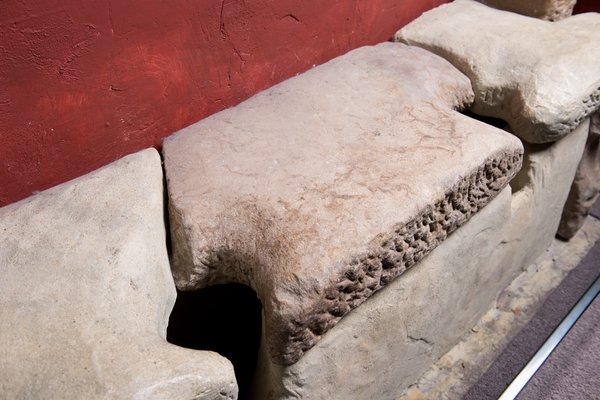
This is probably my favourite object – the Roman toilet seat found on site and on display in the Roman Gallery. It creates a lot of interest, particularly with the kids, and, if you will forgive the pun, it gets to the bottom of the Roman psyche.
Stuart, retired Customer Services Assistant
14. Stephenson's Geordie Lamp

A reminder that this whole area was part of the Wallsend Coalfield, which in the 1700s produced the best household coal in the world, and of the technology revolution that developed in this region.
Geoff, Museum Manager
15. Swan Hunters' clocking in/out clock
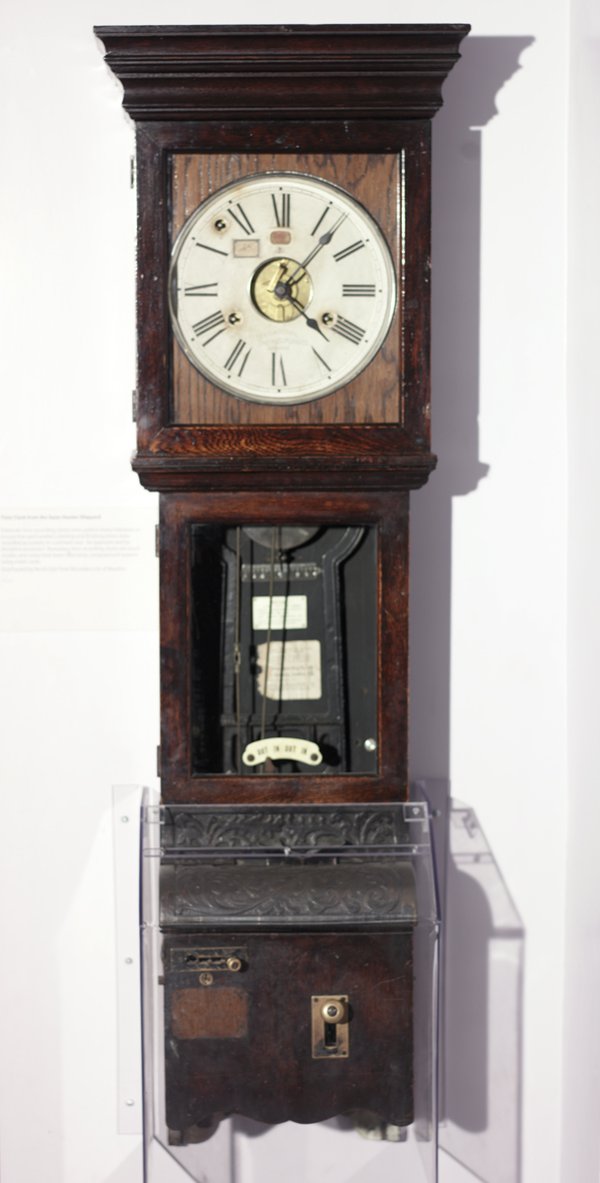
The clocking in machine, or time clock, in the Strong Place Gallery is all that is left of the once great shipyard. How many hands have removed their clocking in card from the holders, stamped it using the brass handle and replaced it in the holder on the other side of the time clock?
Stuart, retired Customer Services Assistant
16. Bermuda dry dock model
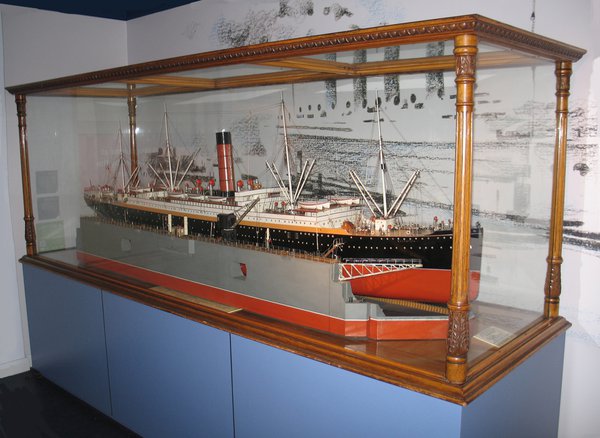
The Bermuda dry dock is my favourite object because it shows the innovation and ingenuity of North East engineers. It is also a reminder that the area around the Fort has many layers of history beyond Roman times, including coal mining and, as shown in this model, shipbuilding.
Lucy, Customer Services Officer
17. Reconstructed bath-house

Before Segedunum was officially opened to the public, I was lucky enough to attend two events held for staff where the bath-house was fully functioning. It was wonderful to actually experience the “real thing”. Sadly, the functioning system could not be sustained, but when it re-opens, visitors will still be able to enjoy the beauty of the building.
Liz, Adminstrator
18. Roman herb garden
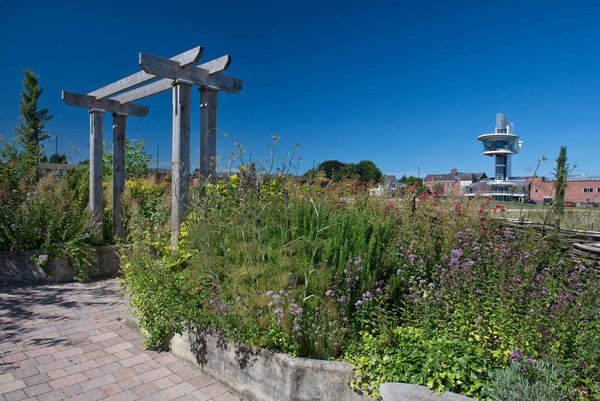
I have spent many an hour weeding, pruning, nurturing etc. this garden. In the summer, it is full of flowers and many herbs that would have been used by the Romans.
Stuart, retired Customer Services Assistant
19. Original Roman baths
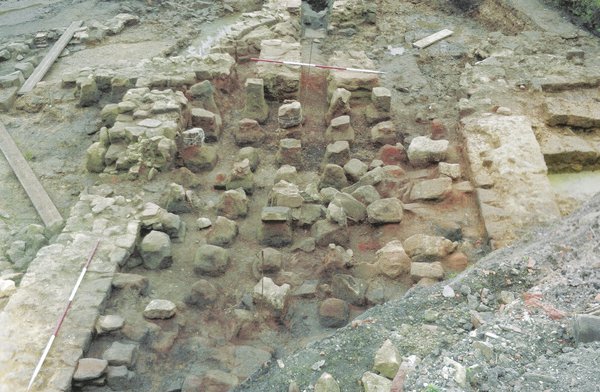
These show the remains of the hypocaust system – a very early means of heating a building. The Roman baths lay undiscovered for almost 1800 years, finally revealed following excavation of a derelict local pub. For me, this is real history on your doorstep.
Stuart, retired Customer Services Assistant
(On the Hadrian's Wall National Path, adjacent to the Fort site)
20. Headquarters building threshold stone
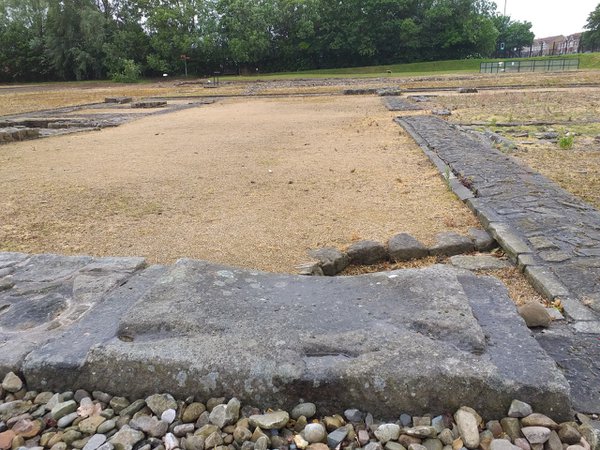
This stone has been worn down by the shoes of the fort’s Commanding Officers walking in the door to the Headquarters Building to deliver their daily address from the dais at the far end to the assembled officers. It gives a visible physical link to the people in the garrison and their daily routines.
Geoff, Museum Manager
21. Hadrian's Wall
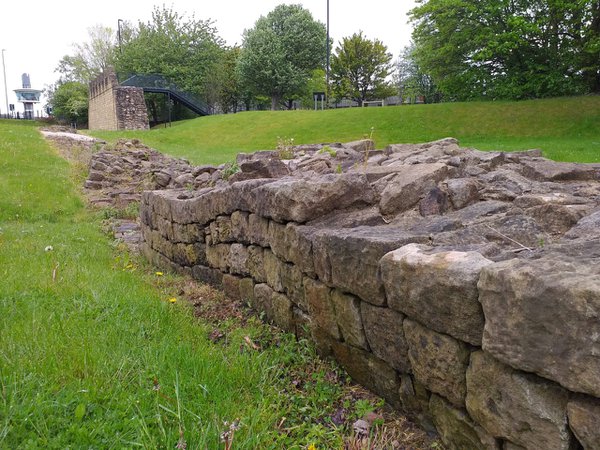
This should probably have been Number 1 on the list, as it’s the reason that Segedunum is here! This 80 metre stretch of Hadrian’s Wall foundations tells a remarkable story. It includes a Roman culvert forming part of an aqueduct system directing water to the fort baths and other buildings. Water from a nearby spring still seeps through 1900 years later.
This section of Wall also suffered a collapse, probably due to a calamitous flood, and had to be rebuilt. Further collapses and rebuilds followed showing that the Romans had quite a maintenance task on their hands here at Segedunum.
Geoff, Museum Manager


/https://s3-eu-west-1.amazonaws.com/atwam-images-files/production/images/content/segedunumromanfort/2017-03/136880.jpg)
